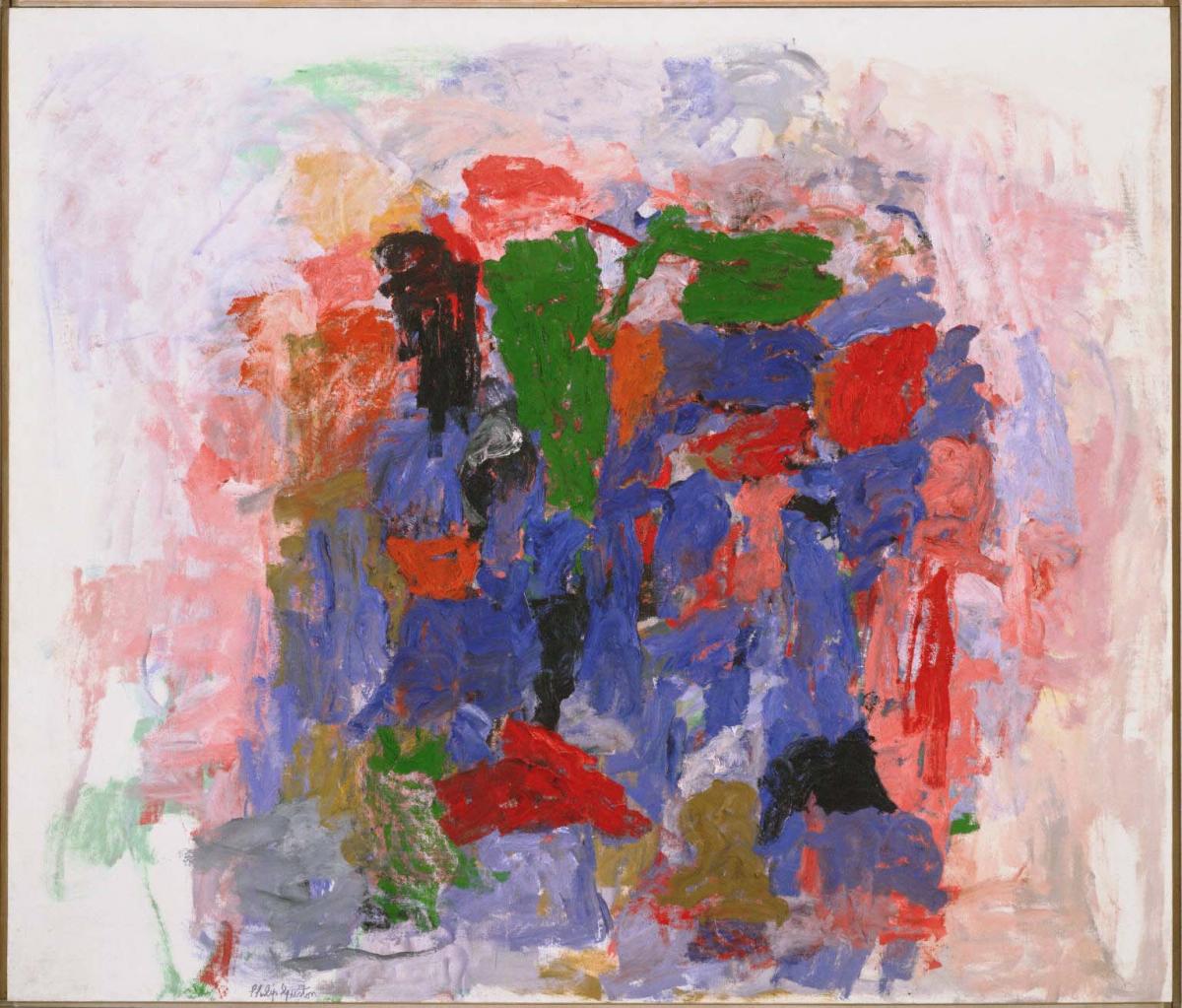Native's Return
Philip Guston ( 1957 )

By the early 1950s, Phillip Guston had completely eliminated representation from his paintings and arrived at an abstract style featuring centered masses of densely packed, colored brushstrokes whose boundaries fade and dissolve into their surrounding atmosphere. Native’s Return (1957) is one of Guston’s strongest statements in this abstract style.
A trip to Italy in 1948–1949 seems to have influenced Guston to move toward total abstraction. He had admired the clear compositions of the North Italian painters such as Piero della Francesca and the glowing colors of the Venetians and recognized that the interaction of color and structure alone could be a potent means of expression. Appreciative of the work of the abstract-expressionist painters with whom he associated on his return to America, Guston developed an abstract style based on expressive form and lyrical color. He relied on the interaction of form and color to convey his inner conflicts, sensations, and experiences, for which he had an acute alertness and memory. At this time, his art also suggests the work of his friend and fellow Abstract Expressionist, Bradley Walker Tomlin, in its sensitivity to the wide range of expression possible through color, be it vibrant and direct or delicate and fragile.
Guston’s abstractions of the early 1950s were composed of shimmering clusters of vigorous brushstrokes that gave him prominence among the Abstract Expressionists. When Native’s Return was painted in the late 1950s, Guston was trying to heighten the solidity and permanence of his paintings—to convey a state of rest and one of motion simultaneously in the space of the canvas. Solid masses of thick color have been bonded together, without overlapping, within an enveloping atmosphere. Forms of violet-blue, light green, and salmon red are shot through with black pigment, graying the palette and adding weight to the image. An opposing sense of transience, however, is created by the loose white strokes surrounding the more solid mass of the interwoven colors. This duality becomes evident in other abstractions by the artist, who sought to present the extremes found in nature and within himself: oppositions of motion and rest, closed and open, solid and fragile, enduring and transitory.
Duncan Phillips purchased Native’s Return soon after its 1958 showing at the Sidney Janis Gallery, where it received favorable comment. Entranced by the painting’s sensuous color, Phillips displayed it with paintings by Rothko and Tomlin; however, Phillips was aware of the dualities and oppositions that set this work apart from that of the other artists. He wrote that “Guston’s temperament was “impulsive, volatile, and lyrical” and that he “seems to paint out of immediate existential needs rather than out of ideal drives.”